New breakthroughs could cut the cost of wind energy in half by 2030—making it fully competitive with the fuel cost of natural gas.
Office of Critical Minerals and Energy Innovation
August 23, 2017New energy science and technological breakthroughs could cut the cost of wind energy in half by 2030—making it fully competitive with the fuel cost of natural gas.
This new finding is outlined in a report by the National Renewable Energy Laboratory (NREL) that examines the future of wind power plants—backed by the supercomputing power of the U.S. Department of Energy’s (DOE’s) national laboratories.
It’s part of DOE’s Atmosphere to Electrons initiative, which focuses on maximizing efficiencies at the plant level (i.e. how wind turbines interact with one another and the atmosphere) rather than treating each wind turbine as an individual unit. The next step is for DOE to apply high-performance computing to this grand challenge of better understanding the complex physics that control electricity generation by wind plants.
The Wind Plant of the Future
According to NREL, the wind plant of the future will use a collection of technologies that allow wind power plants and the turbines within them to not only respond to the atmosphere as an efficient, integrated system, but also to control the airflow within the plant to maximize power production. This approach is made possible by recent advances in supercomputing technology, which turns large sets of atmospheric and wind turbine operation data into a high-fidelity model. Industry can then use these government-driven scientific insights to design new wind turbine components, sensors, and controls. Future wind power plants would include:
- High-fidelity modeling and state-of-the-art sensors to accurately estimate wind power plant energy production, reducing uncertainty and increasing predictability of electricity production;
- Integrated wind plant design, real-time active control of turbines, and operational strategies to increase reliability and extend turbine lifetimes;
- Innovative design of wind turbines and components such as rotors and drivetrains to optimize performance and enhance energy capture, including larger rotors and taller towers to capture higher-potential wind energy in the Earth’s upper atmosphere; and
- Controllable, dispatchable, and predictable grid support services for grid resilience and stability, including precise forecasting of wind energy production for short-term grid operation and planning.
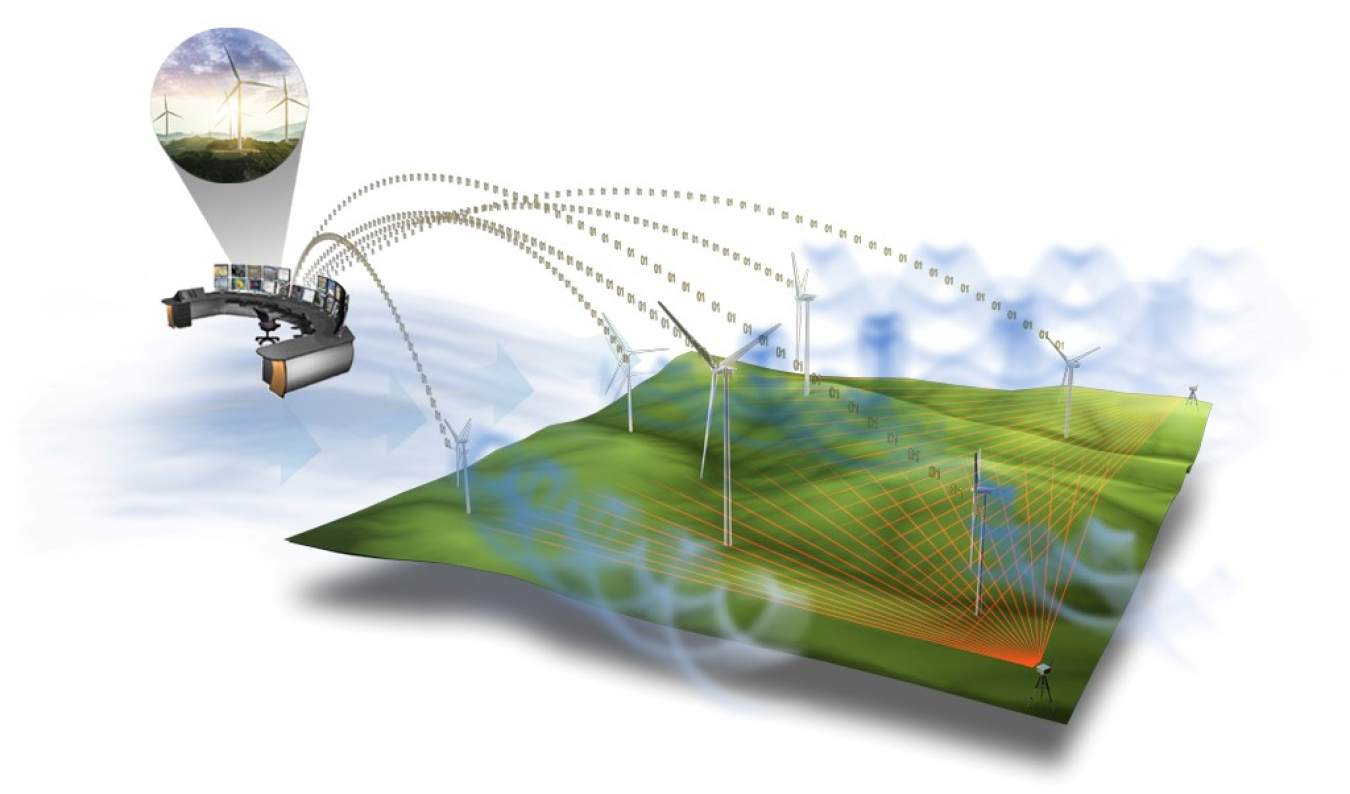
The wind power plant of tomorrow.
Wind’s Place in Shaping the Energy Landscape
The rise of wind energy over the past decade has been driven largely by technological advances that have made wind turbines more efficient at a lower cost. Wind was the third most-installed source of U.S. energy capacity in 2016 behind solar and natural gas. Between 2009 and 2016, installed project costs for new wind farms dropped 33%, while also generating more electricity per turbine.
Continued cost reductions will become even more important as wind’s main policy incentive, the federal production tax credit, expires in 2019. By leveraging high-performance computing and accelerating energy science R&D efforts for the wind plant of the future, wind energy costs could be cut in half by 2030 or sooner, bringing it below the projected fuel cost for natural gas.
Newly built wind plants using production tax credits are already cost-competitive with new natural gas plants in some parts of the U.S., especially in the “wind belt” that runs from Texas to North Dakota. New energy science and technology breakthroughs outlined above could drop the unsubsidized cost of wind energy below the projected cost of fuel for existing natural gas plants by 2030.
Levelized cost of energy is the total cost of installing and operating a project per megawatt-hour of electricity generated by the project over its life. AEO projections are from the Energy Information Administration’s Annual Energy Outlook.
Read more from NREL or download the full report.
Liz Hartman

Liz Hartman is the Communications Lead for DOE’s Wind Energy Technologies Office, and formerly (2009–2016) the Communications Lead for EERE’s combined Wind and Water Power Technologies Office.
Liz is a graduate of Cornell University with a B.S. in Natural Resources and an M.P.A. in Environmental Policy.
Articles by Liz Hartman
-
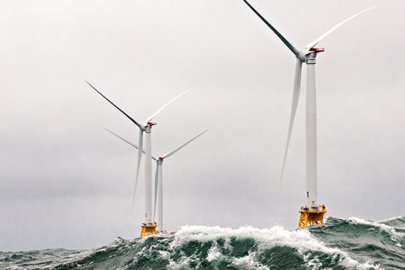 Learn more about efforts to develop America's vast offshore wind resources.
Learn more about efforts to develop America's vast offshore wind resources. -
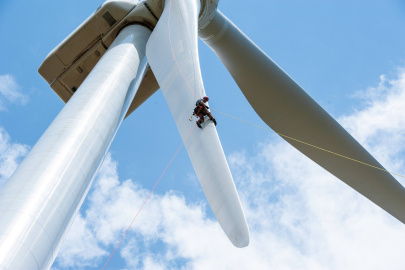 Brush up on your knowledge of wind! Get the details on a few of the lesser-known wind energy facts.
Brush up on your knowledge of wind! Get the details on a few of the lesser-known wind energy facts. -
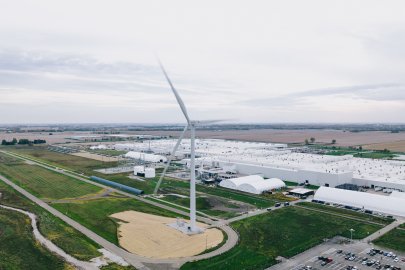 Learn about key facts related to wind turbines used in distributed applications.
Learn about key facts related to wind turbines used in distributed applications. -
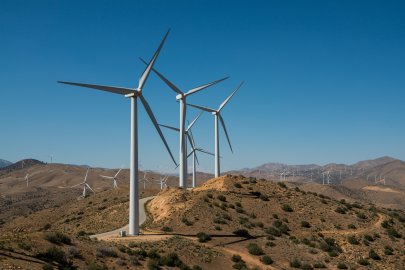 Wind power capacity in the United States continued to experience strong growth in 2017.
Wind power capacity in the United States continued to experience strong growth in 2017. -
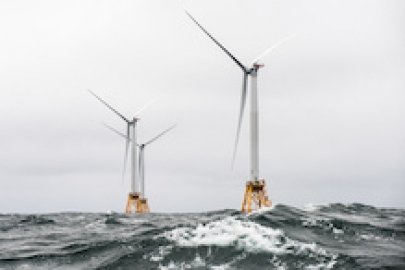 Offshore wind turbines on the Atlantic coast (as well as the Gulf Mexico) have several challenges to contend with—including hurricanes.
Offshore wind turbines on the Atlantic coast (as well as the Gulf Mexico) have several challenges to contend with—including hurricanes. -
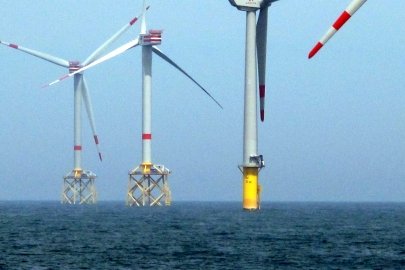 This blog is part of a series that explores offshore wind technical challenges that are different in the U.S. than in other countries.
This blog is part of a series that explores offshore wind technical challenges that are different in the U.S. than in other countries. -
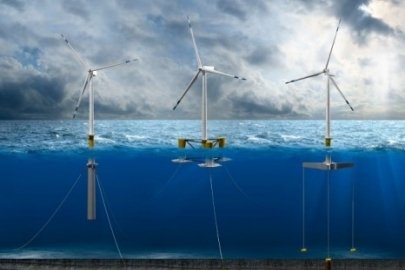 This blog is part of a series that explores offshore wind technical challenges that are different in the United States than in other countries.
This blog is part of a series that explores offshore wind technical challenges that are different in the United States than in other countries. -
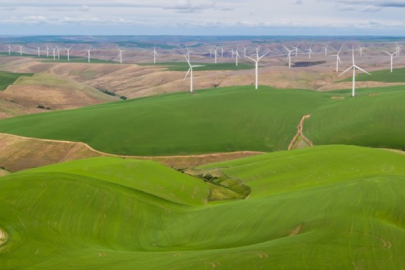 New breakthroughs could cut the cost of wind energy in half by 2030—making it fully competitive with the fuel cost of natural gas.
New breakthroughs could cut the cost of wind energy in half by 2030—making it fully competitive with the fuel cost of natural gas. -
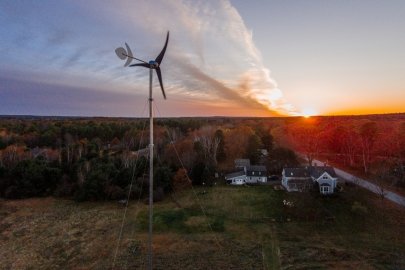 From utility-scale wind farms to the nation’s first offshore wind project, the U.S. wind industry continued to grow in 2016.
From utility-scale wind farms to the nation’s first offshore wind project, the U.S. wind industry continued to grow in 2016. -
Test your energy knowledge by checking out these surprising facts about hydropower.
-
A new report evaluating the potential for offshore wind energy development across U.S. coasts found that even if only 1% of the technical resource potential is recovered, nearly 6.5 million homes could be powered by offshore wind energy.


